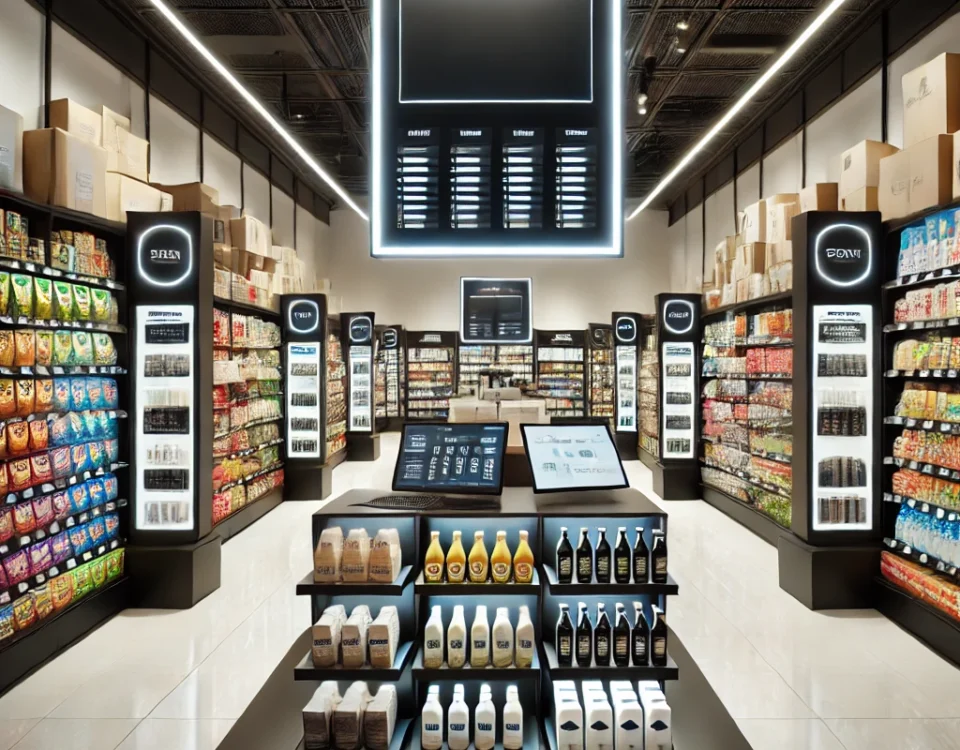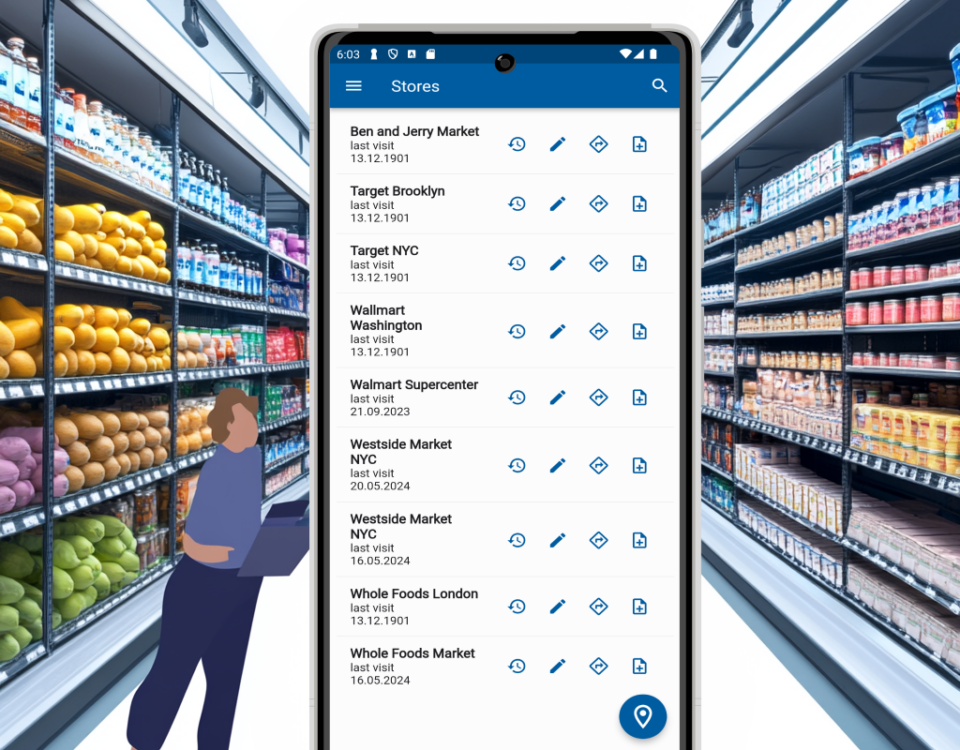
Empowering your field operations in FMCG: Are you equipped for success?

What is the role of the merchandiser and why is it key to successful sales?
Merchandising: what it is and how it is used in retail
Merchandising is an important part of successful retailing, but often remains misunderstood or undervalued. It is the process of strategically presenting and positioning products in stores to attract customer attention and drive purchases.
From the proper placement of merchandise to the use of lighting and colors, merchandising brings together different elements that together create an attractive and effective retail environment.
In this article, we’ll take a detailed look at what merchandising is, how it’s used in retail, and why it’s so important to the success of your business.
What is merchandising?
Merchandising is a key term in the retail world that refers to the overall strategy of presenting and selling products. In practice, it means creating an attractive and functional retail environment that encourages customers to make purchases.
The main objectives of merchandising include:
- Attracting customer attention: by using visual elements such as colours, lighting and space layout, merchandising aims to make products more noticeable and attractive.
- Increase sales: merchandising is designed to make it easier for customers to find products, stimulate impulse purchases and increase average order value.
- Brand building: through consistent and creative product presentation, merchandising helps build brand recognition and a positive brand image.
Merchandising is not limited to the visual aspects of the store. It also includes strategic positioning of products on the shelves, their proper arrangement and even planning of promotional activities.
All of these elements work together to create an environment that encourages customers to make purchases and return.

Types of merchandising and their application
Merchandising encompasses different strategies and approaches that are applied depending on the type of products and the specific objectives of the business. Here are the main types of merchandising and how they are used in retail:
Product merchandising
Product merchandising focuses on the optimal placement and presentation of products in the store. This includes placing products in strategic locations, such as at customer eye level or near checkout areas, where they are more likely to be noticed and purchased.
The aim is to maximise product visibility and stimulate buying behaviour.
Visual merchandising
Visual merchandising deals with all aspects of the visual presentation of products and the retail environment. This includes the use of colors, lighting, displays and decorations that attract customer attention and create a certain mood or theme in the store.
Well-designed visual displays can significantly increase interest in products and encourage sales.
Commercial merchandising
Retail merchandising refers to the management of products in stores, taking into account factors such as inventory, stock rotation and maintaining optimal stock levels.
This also includes interacting with store managers to ensure proper product presentation and promotion. Merchandising plays a key role in ensuring that products are always available and visible to customers.
Digital merchandising (in the context of physical stores)
As technology advances, digital merchandising is starting to play a bigger role in physical stores. This includes the use of digital displays, interactive screens and other technologies that enrich the customer experience and provide additional product information.
Digital merchandising allows retailers to customize and adapt their offerings in real time, depending on customer behavior and preferences.
Omnichannel merchandising
Omnichannel merchandising connects physical stores with online platforms, creating a seamless shopping experience for customers. This includes coordinating inventory, pricing, and promotions across channels so that customers have a consistent experience whether shopping online or in-store.
The omnichannel approach allows marketers to reach customers in the most convenient way for them, increasing sales opportunities.
Each of these types of merchandising plays an important role in retail and helps businesses to optimise their retail strategy, increase sales and build a stronger relationship with their customers.
Why is merchandising important for the success of your business?
Merchandising is not just a decorative aspect of retail; it is a strategic tool that plays a key role in achieving business goals. Here are some of the main reasons why merchandising is essential to the success of your business:
Increasing sales
One of the main purposes of merchandising is to drive sales. By positioning products correctly, using attractive visuals and creating a customer-friendly environment, merchandising increases the chances of customers making impulse purchases.
Well prepared and executed merchandising strategies can significantly increase your business turnover and revenue.
Improving the customer experience
Merchandising plays an important role in creating a pleasant and intuitive experience for customers. When products are easy to find, the store is well organized, and the atmosphere is inviting, customers feel more comfortable and inclined to stay longer in the store.
This not only increases the likelihood of purchase, but also builds loyalty and leads to repeat visits.
Building a brand
Merchandising contributes to building brand recognition and trust. By consistently and creatively presenting products, merchandising helps create a unique brand identity that customers easily recognize and associate with positive emotions.
This association is essential for differentiating your business from competitors and for long-term brand success.
Optimization of inventory
Proper inventory management is an important aspect of merchandising. By optimizing inventory and its positioning, a business can reduce losses from unsold products and ensure that the most in-demand items are always available.
This not only increases efficiency, but also improves customer satisfaction, who can find what they are looking for when they need it.
Adaptation to market trends
Merchandising allows businesses to be flexible and adapt quickly to changing market conditions and consumer preferences. By analyzing data and monitoring customer behavior, merchandising teams can adjust their strategies in real time, offering the most up-to-date products and promotions.
This ability to adapt is key to maintaining business competitiveness.
Each of these factors highlights the importance of merchandising to the success of your business. By investing in effective merchandising strategies, you’ll not only increase sales and improve the customer experience, but you’ll also build a strong and recognizable brand that stands out in the marketplace.
How is merchandising adapting to modern trends?
In modern retail, merchandising continues to evolve, adapting to new technologies and changing consumer habits. To remain competitive, businesses must keep up with these trends and integrate new strategies that meet the needs of today’s customers. Here’s how merchandising is adapting to today’s trends:
The impact of technology on merchandising
Technology plays an increasingly important role in merchandising, offering new tools and methods to attract customers. Digital displays, interactive screens and virtual assistants are just some examples of how technology is transforming the retail environment.
These innovations not only make stores more attractive, but also allow for a more personalized and interactive customer experience, leading to higher satisfaction and a greater likelihood of purchase.
The role of data and analytics in merchandising strategies
Data is the new fuel of effective merchandising. Collecting and analyzing data on customer behavior, sales and inventory allows merchants to make more informed decisions.
This includes optimizing product placement, personalizing promotions and adapting offers in real time. By leveraging data, businesses can anticipate trends, identify best-selling products, and optimize their overall merchandising strategy for maximum effectiveness.
Adaptation to changing user preferences
Today’s consumers expect more than just functional products – they are looking for a complete experience. Merchandising is adapting to these demands by offering more engaging and personalized experiences.
This could include themed displays that tell a story, creating special areas for products that fit a certain lifestyle, or providing unique opportunities to interact with products before purchase. Merchandising must be flexible and ready to adapt to these changes to meet the expectations of today’s consumers.
Integration of online and offline channels(Omni-channel merchandising)
With the development of e-commerce, the lines between physical stores and online shopping are becoming increasingly blurred. Omnichannel merchandising integrates these two channels, creating a unified and consistent customer experience. Customers can browse and buy products online, then pick them up in-store or vice versa.
This integration allows retailers to offer more flexibility and convenience to customers while increasing sales opportunities.
Sustainability and ethics in merchandising
With growing interest in sustainability and ethical practices, merchandising is also adapting to these demands. Increasingly, businesses are choosing to showcase environmentally conscious products and implement sustainable practices in their stores. Т
This could include using recycled materials for displays, reducing energy consumption through efficient lighting systems or offering products with a low carbon footprint. These approaches not only meet the expectations of today’s consumers, but also help businesses position themselves as responsible and ethical brands.
Merchandising is no longer a static process but a dynamic and constantly evolving part of commerce. To be successful, businesses must be ready to embrace new trends and adapt their strategies to meet the expectations of today’s customers. This is the key to achieving sustainable success in today’s competitive marketplace.
Conclusion
Merchandising is the heart of successful retailing, combining the art of visual presentation with the science of sales optimization. Through effective merchandising strategies, businesses not only attract more customers, but also create a better customer experience that leads to increased loyalty and long-term success.
The types of merchandising discussed show that this is not a one-size-fits-all process, but a multi-faceted approach that includes everything from proper product placement to the integration of advanced technology and data analytics. It is important for businesses to understand and implement merchandising strategies in a way that is in sync with the needs and expectations of their customers.
In today’s competitive marketplace, where consumer preferences and technologies are changing rapidly, adaptation and innovation are key. Merchandising must be dynamic and flexible, evolving in parallel with new trends and market demands. This includes not only the use of new technologies, but also attention to sustainable and ethical practices that more and more consumers are looking for.
For businesses that want to remain competitive and continue to grow, it is essential to invest in merchandising. Whether it’s visual presentation, inventory management or the integration of omnichannel strategies, merchandising is an integral part of an overall marketing strategy that can make the difference between success and failure for a business.
By investing in modern merchandising solutions and following best practices, businesses can not only increase sales, but also build a strong and sustainable brand that stands out in the marketplace and earns the trust of their customers.




